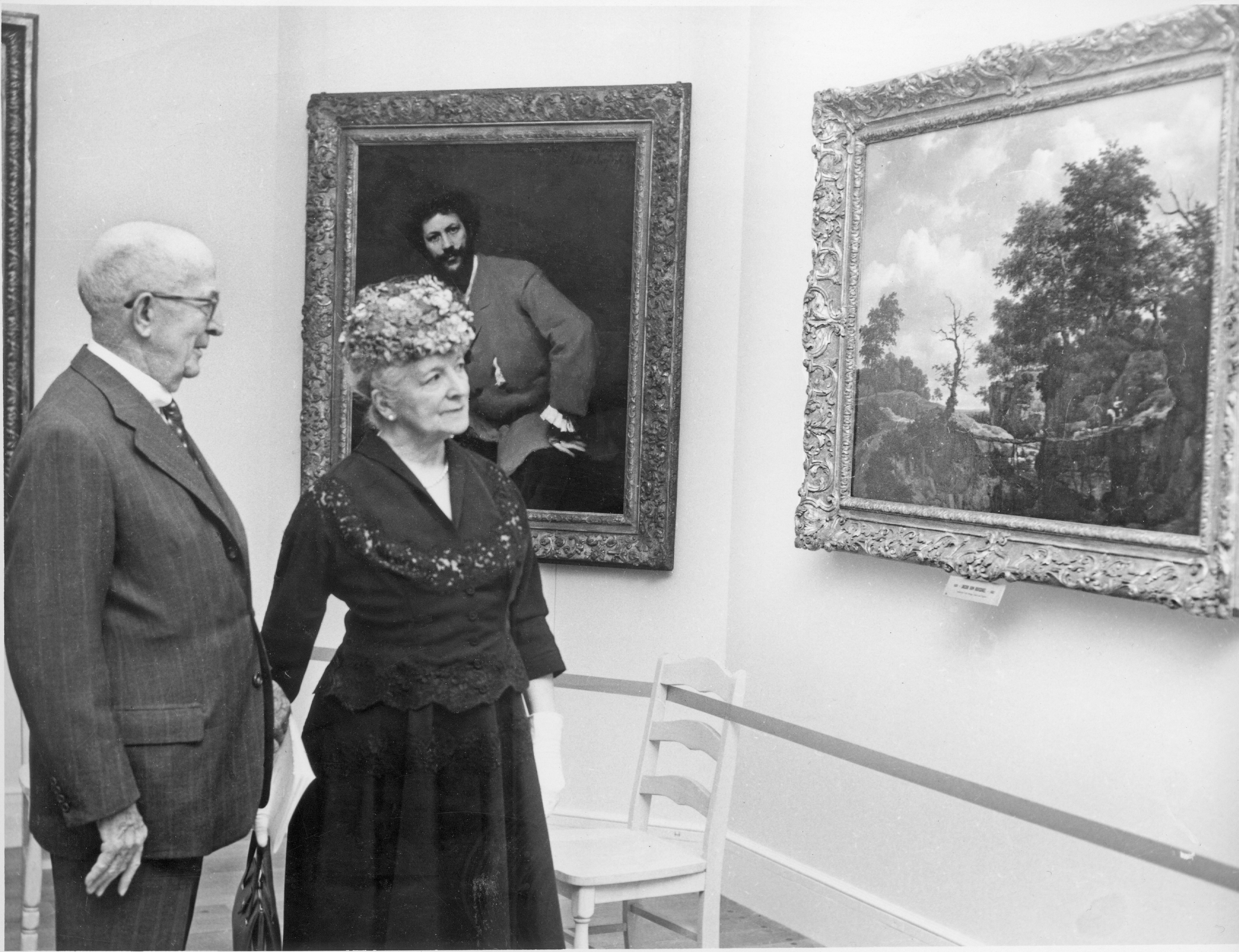History
While Sterling and Francine Clark collected art strictly for pleasure, they wished to establish a public art gallery for their collection. After considering several options, including founding a museum in Cooperstown, New York, or Park Avenue in Manhattan, the Clarks chose Williamstown, Massachusetts, based largely on their familial ties with Williams College. A charter for the museum was signed in 1950, and construction began in 1952.
On May 17, 1955, the Sterling and Francine Clark Art Institute opened under the guidance of its first director, Peter Guille. There were only two galleries, and the majority of the works were not displayed. The Clark slowly unveiled its collection during several exhibitions in the coming years.
A decade of immense change began at the Clark in 1960. Francine Clark died in April, four years after her husband, and the museum received a significant additional endowment that enabled new acquisitions and special programmatic initiatives that enlarged the institute’s educational and research focus and embraced the academic mission of its charter in the coming years.
An art history library was the first requirement for establishing a graduate program, and, in 1964, the Clark opened its library after purchasing the entire bibliographical holdings of art historian Dr. W. R. Juynboll. Noted art historian George Heard Hamilton joined the Clark in June 1966 as director and head of the future graduate program. In 1972, the first graduate class entered the Clark in an innovative program co-sponsored by Williams College and the Clark.
In 1973, the Clark completed a new building (now known as the Manton Research Center) to accommodate the expanding library and new graduate program and house additional office space and an auditorium. David S. Brooke became the third director of the Clark in 1977, and through the early 1990s he implemented a program of significant acquisitions in many areas, including paintings, silver, prints, drawings, and decorative arts.
Under the leadership of Director Michael Conforti, the Clark launched a number of new programs in the mid-1990s, including the Clark Fellows program and an ongoing schedule of symposia and conferences designed to contribute to a broader public understanding of the role of art in culture. Several new family-oriented programs designed to increase engagement with a variety of audiences were instituted, and partnerships with MASS MoCA (the Massachusetts Museum of Contemporary Art) offered curatorial experience in contemporary art for graduate students through Clark-sponsored exhibitions.
The first decade of the twenty-first century saw a transformative gift from Sir Edwin and Lady Manton. In 2007, their collection of more than 300 works of British art and a significant endowment was the largest gift to the Clark since its founding. Continued support by the Manton Family Foundation enlivens the Clark’s programs and enriches its collection. In recognition of the Manton’s generosity, the 1973 granite building housing the Clark’s library, research offices, and administrative functions was named the Manton Research Center.
These years were also marked by a rethinking of the Clark’s campus and the implementation of a master plan that called for two new buildings and a new landscape that reoriented the campus toward Stone Hill. In 2008, a new building atop Stone Hill opened, housing two small galleries, a meeting room, and the offices and facilities of the Williamstown + Atlanta Art Conservation Center. Designed by Pritzker Prize-winning architect Tadao Ando, the Lunder Center at Stone Hill provides purpose-built spaces for special exhibitions, often focusing on contemporary art. The Lunder Center also offers outdoor picnic facilities on the Moltz Terrace, providing magnificent views of the surrounding woodlands. In late 2010, construction began on an ambitious campus expansion program that transformed the Clark’s campus.
On July 4, 2014, the Clark celebrated its grand reopening, unveiling the Clark Center, also designed by Tadao Ando; a renovated and expanded Museum Building designed by Selldorf Architects; and the dramatic rethinking of the landscape by Reed Hilderbrand. In November 2016, the master plan was completed with the renovation of the Manton Research Center by Selldorf Architects. The Clark will soon embark upon construction of a new facility, the Aso O. Tavitian Wing, to house a collection of 331 paintings, sculpture, drawings, and decorative arts gifted to the Institute by the Aso O. Tavitian Foundation. The new wing, also designed by Selldorf Architects, is expected to be completed in 2028.
Michael Conforti ended his twenty-year tenure as director in 2015, and Olivier Meslay was named Hardymon Director in 2016.
ABOUT THE CLARKS
Robert Sterling Clark was born in New York City on June 25, 1877, the son of Alfred Corning Clark and Elizabeth Scriven Clark. An heir to the Singer sewing machine fortune—his grandfather had been Isaac Singer’s business partner—Clark had a lively interest in art collecting cultivated by his father.
In 1899, Clark graduated from Yale University’s Sheffield Scientific School with a degree in engineering. He then entered the United States Army, which sent him to the Philippines and later to China. Clark settled in Paris in 1910 where he met and, in 1919 married, Francine Clary.
Clary was born in 1876 in France. A former actress with the Comédie Française, she shared with her husband an avid interest in collecting art. Sterling referred to his wife as his “touchstone in judging pictures.” He once described Francine as “an excellent judge, much better than I am at times, though I have known her to make mistakes on account of charming subjects.”
